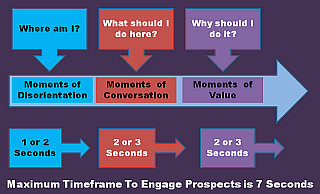The Essence of Search Engine Optimisation or SEO is keyword research and link building with those keyword.
I am going to show you how to drive more traffic and sales by pushing your site to the top of search engine rankings and using the right keywords to do it. Search Engine success starts with selecting the appropriate keywords that internet users are inserting into search engine query boxes.The first area to concentrate upon in any search engine optimisation project is analytics and web intelligence.
Keyword research is the second step in the process of optimising your website. This process called Search Engine Optimisation or SEO for short. This diagram shows the other steps in the SEO process.
In ths post I'm detailing the process steps within Keyword Research. Website owners who want search engine success need to figure out which phrases their potential customers are actually searching on. These phrases or keywords can be found with Google keywords tool and is one of the best FREE tools for finding keywords or keyword phrases. You can mine the Google Database to pinpoint the exact keywords used by people who are looking for products just like yours. Here’s how we do it:
KEYWORD SELECTION
The topic of the page will determine the primary keyword or keyword pgrases and synonyms to use as secondary keywords of the page. In my example I’m choosing ““keyword research”.BROAD MATCH VERSUS EXACT MATCH
Follow this step to find Google FREE keyword tool. In the Google query box type: “Google keyword tool”. In the word or phrase box type iin the keyword, from the left column Match Types select Broad Match, in the Advanced Options and Filters select the country and language of your target market. Then press the Search Button. If you have an Adwords account with Google you can access the same data but with 800 suggestions and search volumes for the last 12 months. This data will be useful later in the research phrase.LEVEL OF COMPETITION
Enter the keyword phrase in Google query box. Google shows you a page called search engine results page, detailing 9 paid search results (top and left side of page) and 10 organic search results (Nov 2012), and says it results 116.000.000 (116m) web pages in less than 034 seconds. The numbers are important. 116m represents web competitors for your select keyword and the numbers of paid search ads indicates a highly competitive keyword.FIND SYNONYMS
Choose alternative like keyword phrases or synonyms from the list of suggestions given by Google and repeat the instructions in the paragraph LEVEL OF COMPETITION to find the number of competitors.KEYWORD EFFICIENCY INDEX
Calculate the KEI or keyword efficiency index by squaring the search volume for each keyword (SV2) divided by the number of competitors ( C ). Expressed as sv2/c. You should Choose the keyword with the highest KEI. In my example “keyword Research”.ANALYSE THE STRENGTH OF THE COMPETITION
My goal is to get the web page on Google first page for the keyword “ keyword research” and to do that we need to access the strength of the competition. I use the page rank of websites as a crude but easily accessible measure of strength.Note down the page rank (PR) of each website (from the Google Toolbar) on the first, second and third pages of your SERP for your keyword. If the total of PR is over 50 that indicates huge competition as each website has an average of PR5 and the range of PR values might be between PR 3 – PR 7. Do this for all your keywords for all search values and for the search values for the last 12 months, if you have them.
ANALYSE YOUR WEB COMPETITORS
Repeat step 2 for exact match of the keyword to establish the numbers of web pages competing for the keyword. Also find the numbers of competitors that place the keyword in the title of their website pages by inserting this command in the Google query box. Intitle: keyword research. In my example this reduced the number of competitors to 13.800.000 rather than 116.000.000. For these competitors also calculate the sum of the PR strength of the competition. You will need all these numbers to calculate the KEI.ANALYSE SEARCH VOLUMES OVER TIME
It frequently happens that seasonal fluctuations occur in search volumes. You can use Google Trends to establish likely future volumes and, if trends can be predicted, this will help you change your keyword strategy and create pages for other keywords that are much stronger in certain periods of the year. In my example the keyword “keyword research’ is strong from January to March but during the summer months the keyword phrase “ Researching Keywords” were very popular. So you must find other keywords that are more popular to liven up the campaign.TWO WORD, THREE WORD OR FOR WORD KEYWORD PHRASES
I have chosen a two word keyword as an example but research shows that three word and four word keyword phrases have better conversion results. So bear this in mind when selecting keywords to research.KEYWORD PLACEMENTS
Placing the Keyword Phrase in the content and code of the website is the next important step to perform. I have used the keyword: “Keyword Research” as it’s the topic of the page. So you should do the same. You should place the keyword phrase in the URL, title, description and Meta Tags H1 Headings and Image Alt Text of the web page;• URL -The top level domains uniform resource locator or URL for short, of this web page is: http://www.seosynovation.com/seo-keyword-analysis.php
• Title - of the web page in Google’s search engine results pages is: Keyword Research by SEO Synovation.
• Description – contains the keyword “keyword research”.
• H1 Heading – is “Keywords Research”
• Image Alt Tag – image of researching keywords.
• It is very important to use synonyms of keyword phrases and the Goggle suggestions give some good examples of this.





















